Blog
Carney and Trump: A Deep Dive into Their Strategic Meeting and Its Implications
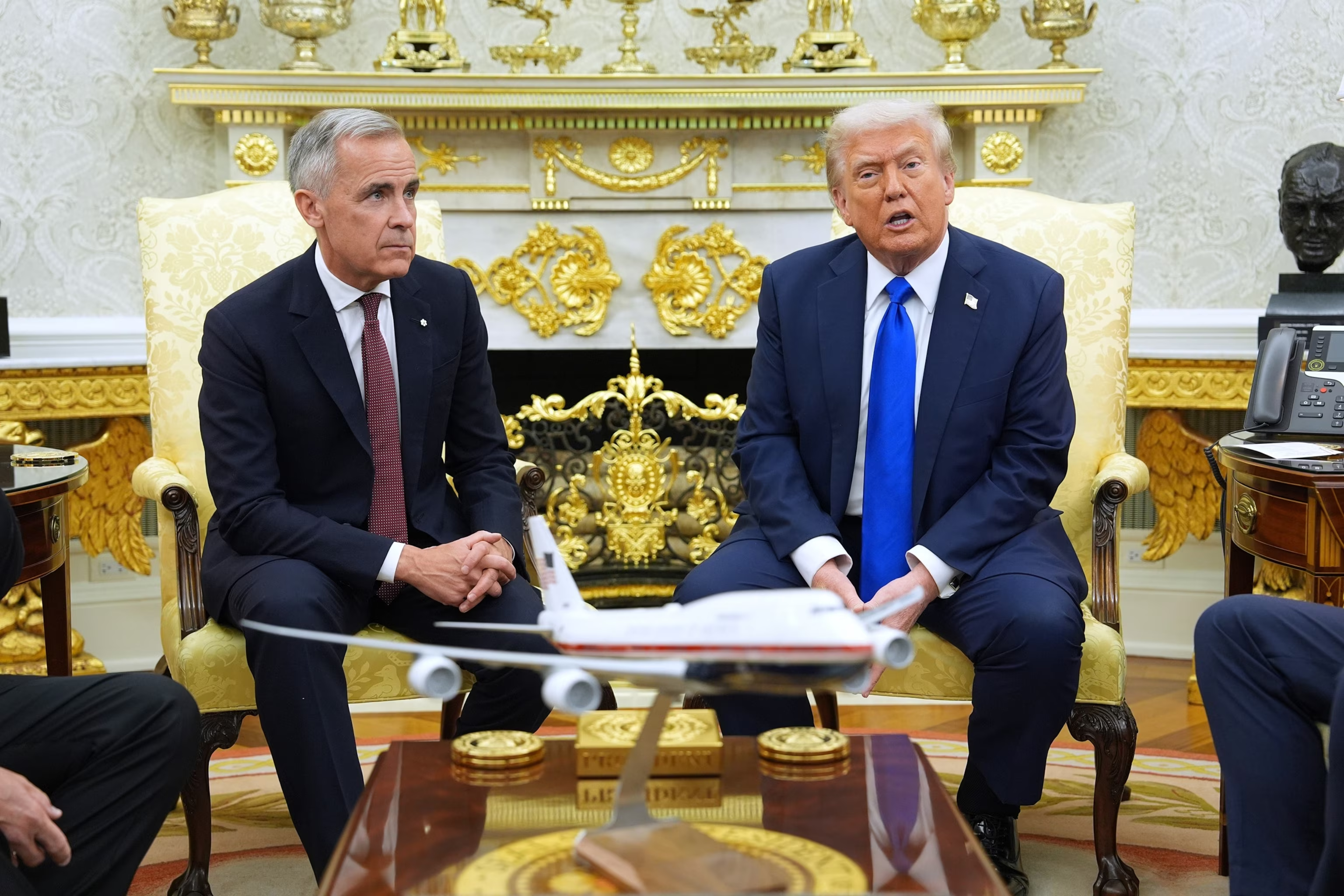
🧠 Introduction: A Pivotal Moment in Canada-U.S. Relations
Carney and Trump:- Canadian Prime Minister Mark Carney met with U.S. President Donald Trump at the White House in a high-stakes diplomatic encounter. This meeting aimed to address escalating trade tensions and explore avenues for strengthening bilateral ties. While no immediate trade agreement was reached, the discussions signaled a potential thaw in relations between the two nations. Politico
🏛️ The Meeting: Key Highlights
The meeting between Canadian Prime Minister Mark Carney and U.S. President Donald Trump was closely watched by policymakers, investors, and the global media. It combined diplomatic formalities with substantive discussions on trade, policy, and bilateral relations.
A Cordial Start
- President Trump welcomed Carney with warm remarks, calling him a “world-class leader” and praising Canada-U.S. cooperation.
- The friendly reception set a positive tone for subsequent discussions, highlighting the role of personal rapport in international diplomacy.
- Photographs of the handshake circulated widely, signaling a symbolic commitment to dialogue.
📉 Trade and Tariff Discussions
- A major focus of the meeting was the U.S. tariffs on Canadian steel and aluminum.
- Carney emphasized the economic impact on Canadian industries, urging a swift resolution to protect jobs and trade stability.
- Both leaders explored options for mitigating trade tensions, including temporary exemptions and potential bilateral agreements.
🔄 USMCA and Future Trade Agreements
- President Trump expressed ambivalence about the USMCA, hinting at possible renegotiations or bilateral arrangements with Canada.
- Carney stressed the importance of predictable trade rules for long-term economic growth.
- The discussion highlighted the complexity of North American trade relations and the need for continued negotiation and cooperation.
🧑💼 Dominic LeBlanc’s Strategic Role
- Canada’s Minister of Intergovernmental Affairs, Dominic LeBlanc, participated in the talks, facilitating discussion points and supporting Carney.
- LeBlanc’s involvement signaled Canada’s commitment to collaborative diplomacy and strategic negotiation with the U.S. administration.
📸 Media and Public Messaging
The Carney-Trump encounter was not only a diplomatic event but also a highly media-visible moment that shaped public perception of Canada-U.S. relations.
📰 Global Media Coverage
- Leading news outlets highlighted the meeting as a critical moment in North American diplomacy, emphasizing both symbolic gestures and substantive discussions.
- Headlines focused on trade tensions, USMCA uncertainties, and Carney’s role in advocating for Canadian economic interests.
- Media analysis suggested the meeting reflected a careful balance between cooperation and negotiation, with both leaders projecting strength and diplomacy.
📢 Public Messaging from Leaders
- President Trump used the occasion to underscore trade optimism while signaling potential flexibility in agreements.
- Prime Minister Carney emphasized Canada’s commitment to dialogue, fairness, and collaboration, reassuring domestic audiences of proactive engagement.
- Both leaders’ statements were strategically crafted to reinforce bilateral goodwill while leaving room for future negotiations.
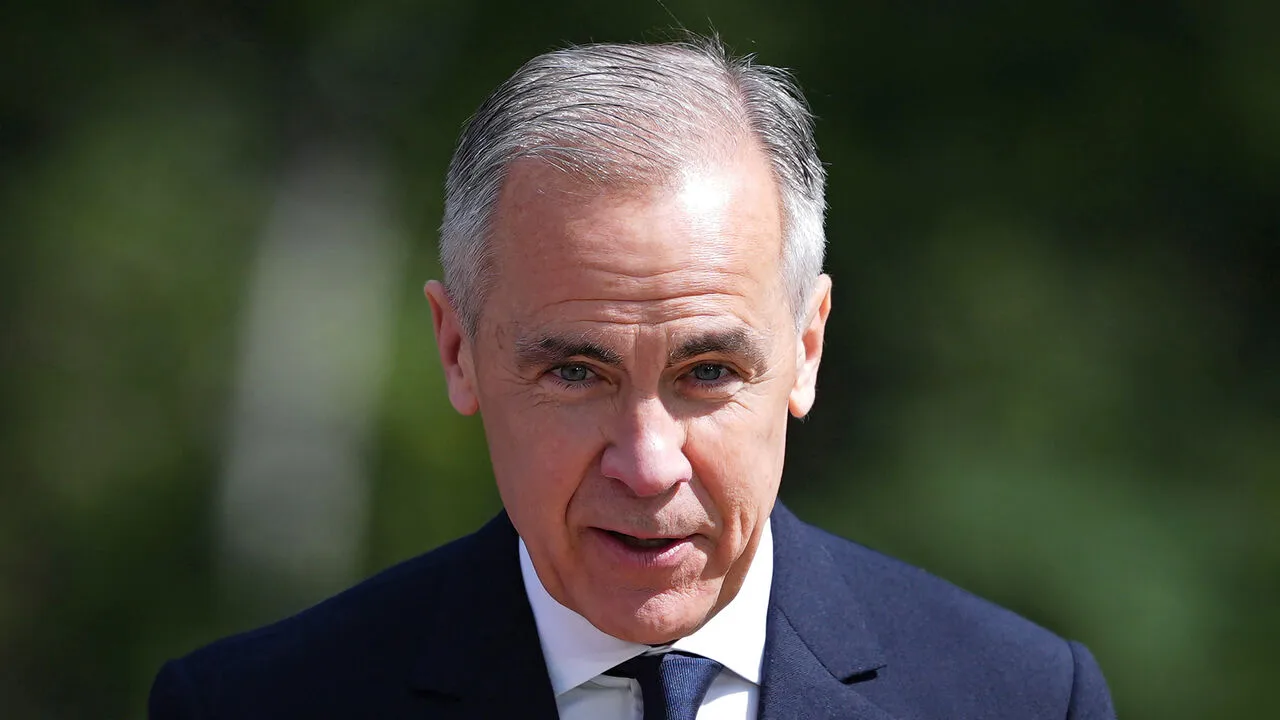
🌐 Social Media Amplification
- Clips and images from the meeting, including handshakes and joint press conferences, circulated widely on platforms like Twitter, Facebook, and Instagram.
- Public engagement reflected interest in both policy outcomes and diplomatic symbolism, with social media acting as a secondary amplifier of traditional media coverage.
- Hashtags such as #CarneyTrump, #CanadaUSRelations, and #TradeTalks trended briefly, emphasizing the public’s attention to the meeting’s significance.
💡 Strategic Messaging Takeaways
- The meeting served as a carefully choreographed event to demonstrate both cooperation and Canada’s assertiveness on trade issues.
- Public and media messaging reinforced the importance of maintaining open dialogue, even amidst policy disagreements.
- It highlighted the role of media in shaping international perceptions and influencing public confidence in government negotiations.
🤝 A Warm Reception
The Carney-Trump meeting began on a cordial and positive note, demonstrating the importance of personal rapport in high-level diplomacy.
🏛️ Presidential Welcome
- President Donald Trump greeted Prime Minister Mark Carney with cordial remarks, calling him a “world-class leader” and praising Canada-U.S. cooperation.
- The handshake and formal photo opportunities emphasized a symbolic commitment to dialogue and strengthened mutual respect.
🌐 Diplomatic Significance
- The warm reception was a strategic move to foster a productive environment for discussions on trade and policy.
- Both leaders used the early moments to signal goodwill to domestic and international audiences, highlighting a willingness to collaborate despite prior trade tensions.
📸 Media Spotlight
- Media coverage of the reception highlighted the positive optics, with headlines focusing on the cordial tone rather than policy disagreements.
- Photographs of smiles, handshakes, and light conversation served as visual proof of constructive diplomacy.
- Social media amplified these moments, with hashtags like #CarneyTrump and #CanadaUSRelations trending briefly.
💡 Strategic Takeaways
- A warm reception at the start of negotiations can set a favorable tone for complex discussions.
- This moment helped Carney and Trump demonstrate respect, cooperation, and professionalism to both domestic and international audiences.
- It reflected Canada’s emphasis on diplomatic engagement and the importance of symbolic gestures in international relations.
📉 Addressing Trade Tensions
A central focus of the Carney-Trump meeting was resolving ongoing trade disputes between Canada and the United States. These discussions highlighted the economic stakes for both nations and set the tone for potential policy adjustments.
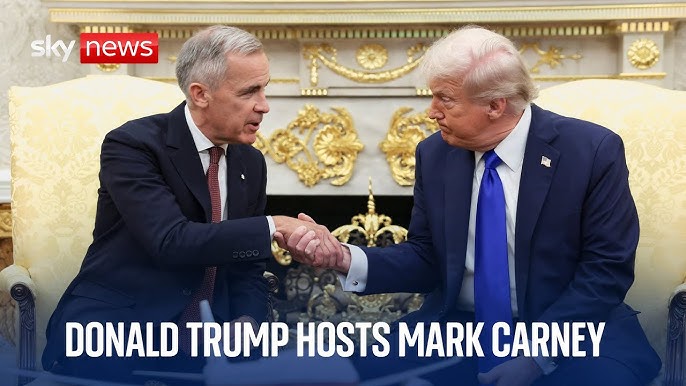
🏭 Steel and Aluminum Tariffs
- U.S. tariffs on Canadian steel and aluminum were a primary topic of discussion.
- Mark Carney emphasized the impact on Canadian manufacturers, exporters, and jobs, urging a swift and fair resolution.
- President Trump acknowledged the concerns but remained cautious about unilateral changes, suggesting possible exemptions or negotiated solutions.
🔄 Broader Trade Frictions
- Beyond metals, the leaders discussed tariffs and trade barriers affecting agriculture, automotive, and energy sectors.
- Carney highlighted the mutual benefits of removing obstacles to strengthen supply chains and encourage bilateral investment.
- Both parties explored options to balance domestic economic priorities with international trade obligations.
💬 Diplomatic Negotiation Tactics
- Carney employed a measured approach, emphasizing collaboration while protecting Canadian interests.
- Trump balanced economic caution with rhetoric aimed at showcasing American strength, leaving room for future negotiation flexibility.
- The tone suggested ongoing dialogue rather than immediate resolution, reflecting the complexity of cross-border trade policy.
🌐 Economic and Political Implications
- Resolving trade tensions is crucial for investor confidence in North America.
- Media coverage highlighted the meeting as a signal of constructive engagement, even if concrete agreements were not finalized.
- The discussions set the stage for follow-up negotiations and potential bilateral agreements, impacting the broader Canada-U.S. economic relationship.
🔄 Future of the USMCAOne of the most closely watched aspects of the Carney-Trump meeting was the discussion surrounding the United States-Mexico-Canada Agreement (USMCA). The talks underscored both the strategic importance and uncertainties surrounding North American trade relations.
🏛️ Trump’s Position on USMCA
- President Trump expressed ambivalence regarding the USMCA, hinting at potential renegotiation or the pursuit of separate bilateral agreements with Canada.
- His stance reflected the U.S. administration’s focus on trade fairness and protecting domestic industries.
- Media reports emphasized that while Trump did not reject the agreement outright, he suggested flexibility in addressing Canadian concerns.
🤝 Carney’s Advocacy for Stability
- Prime Minister Mark Carney stressed the importance of predictable trade rules for businesses and investors across North America.
- Carney highlighted that uncertainty around USMCA terms could affect manufacturing, exports, and long-term economic planning.
- He advocated for dialogue-driven solutions to maintain strong Canada-U.S. trade ties while protecting Canadian interests.
🌐 Bilateral and Multilateral Implications
- The discussion revealed the complex dynamics of trilateral trade agreements and the possibility of bilateral negotiations taking precedence.
- Carney emphasized that Canada is prepared for multiple scenarios, including adjustments to the USMCA or standalone agreements with the U.S.
- Analysts noted that the meeting served as a platform to manage uncertainties and prevent escalation of trade disputes.
💡 Strategic Takeaways
The future of the USMCA will likely involve incremental negotiation and continuous dialogue, with Carney positioned as a key advocate for Canadian economic interests.
The Carney-Trump meeting highlighted the delicate balance between diplomacy and economic strategy.
Both leaders signaled a willingness to continue discussions, even if immediate resolutions were not achieved.
🌍 Broader Implications
The Carney-Trump meeting carries significance far beyond the immediate trade discussions, with implications for diplomatic relations, economic stability, and global policy trends.
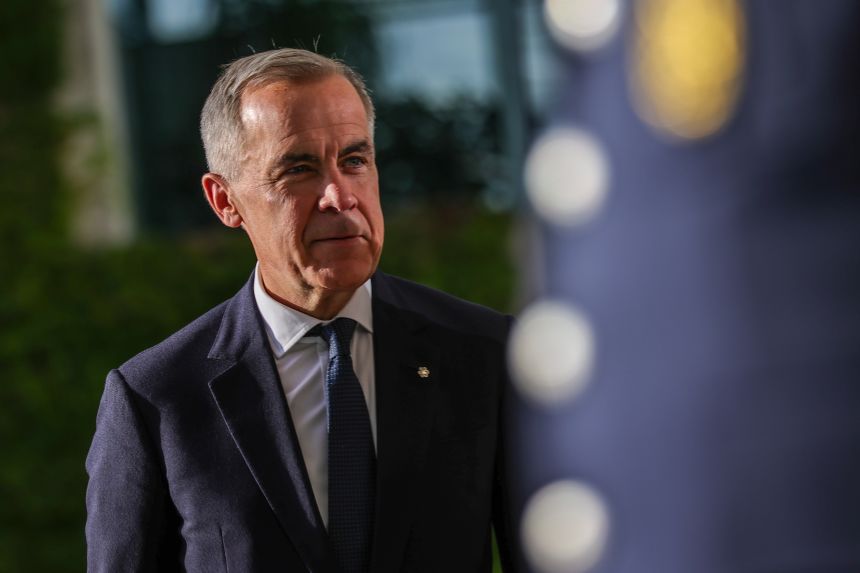
🛡️ Strengthening Diplomatic Channels
- The meeting reinforced the importance of open communication between Canada and the U.S., even amid disagreements on trade.
- Carney and Trump demonstrated that diplomatic engagement remains vital for resolving disputes and fostering long-term cooperation.
- Maintaining strong ties ensures both nations can collaborate on security, climate, and international economic policies.
📈 Economic Consequences
- Discussions on tariffs, USMCA, and bilateral trade agreements influence investor confidence across North America.
- Any resolution—or prolonged uncertainty—affects manufacturing, exports, and cross-border investments, highlighting the economic weight of these meetings.
- Businesses closely monitor such meetings to anticipate policy shifts and adapt supply chains accordingly.
🧑💼 Role of Key Leaders: Dominic LeBlanc
- Dominic LeBlanc, Canada’s Minister responsible for intergovernmental and trade relations, played a pivotal role in facilitating discussions.
- His involvement underscores Canada’s strategic approach in navigating complex U.S. relations.
- LeBlanc’s presence signaled Canada’s commitment to proactive negotiation and multilateral problem-solving.
🌐 Global Policy Implications
- The meeting also sent signals to international partners regarding Canada-U.S. trade dynamics.
- It highlighted the interconnectedness of North American economies and the influence of bilateral discussions on global markets and diplomacy.
- Analysts note that the Carney-Trump encounter sets a precedent for future high-level diplomatic engagement in the region.
💡 Key Takeaways
- Carney-Trump talks illustrate the multifaceted nature of modern diplomacy, blending economic negotiation with strategic messaging.
- The meeting impacts domestic politics, international trade, and investor sentiment, highlighting the broader importance of diplomatic engagement.
- Canada’s approach, supported by leaders like Dominic LeBlanc, reflects a measured, proactive strategy to safeguard national and regional interests.
📈 Looking Ahead: Potential Outcomes
While the Carney-Trump meeting did not yield immediate agreements, it set the stage for future negotiations and strategic cooperation. Understanding potential outcomes helps gauge the long-term impact on Canada-U.S. relations.
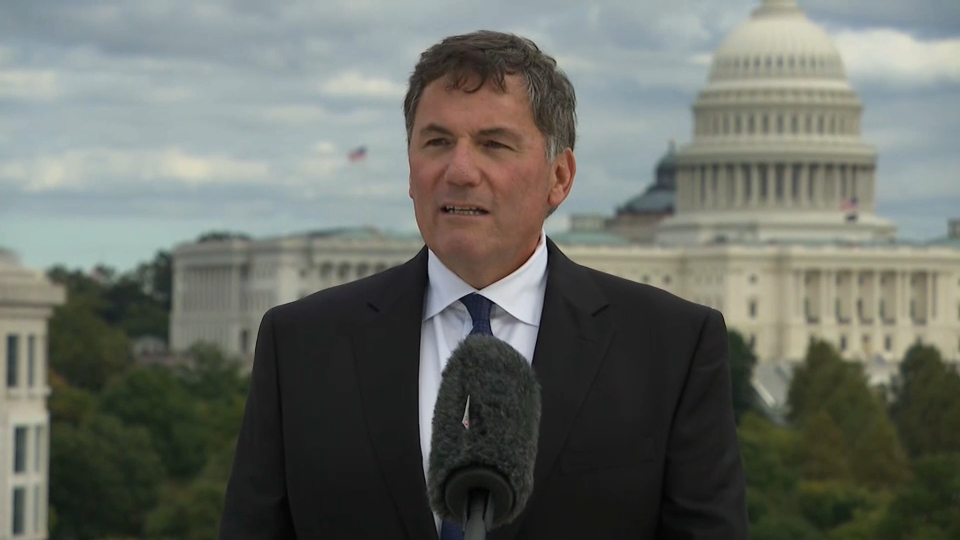
🔄 Continued Trade Negotiations
- Both leaders signaled a willingness to engage in follow-up discussions, particularly regarding:
- Steel and aluminum tariffs
- USMCA uncertainties
- Bilateral trade agreements
- These ongoing talks aim to resolve trade tensions while safeguarding economic interests for both nations.
🌐 Strengthening Bilateral Relations
- The meeting reinforced Canada-U.S. diplomatic channels, emphasizing collaboration beyond immediate trade issues.
- Open dialogue fosters cooperation in areas such as security, climate initiatives, and international economic policy.
- By maintaining a productive relationship, both countries can respond more effectively to global challenges.
💡 Potential Economic Impacts
- Future negotiations may directly influence cross-border investments, manufacturing, and supply chains.
- Resolution of trade disputes could boost investor confidence and stabilize regional markets.
- Conversely, delays or disagreements could create uncertainty for businesses and economic forecasting.
🧑💼 The Role of Key Players
- Mark Carney is positioned as a strategic advocate for Canadian interests, balancing diplomacy and economic priorities.
- Dominic LeBlanc continues to facilitate discussions, ensuring Canada’s positions are clearly communicated and negotiations remain constructive.
- President Trump’s decisions will influence both the pace and scope of future agreements, making continued engagement essential.
🔮 Long-Term Implications
- The Carney-Trump encounter demonstrates the importance of high-level dialogue in shaping international trade and policy.
- While immediate outcomes may be limited, the meeting lays the groundwork for stronger cooperation and a more predictable Canada-U.S. economic relationship.
- Observers suggest that incremental progress in negotiations could eventually result in enhanced trade stability and improved bilateral ties.
📝 Conclusion
The meeting between Canadian Prime Minister Mark Carney and U.S. President Donald Trump marked a pivotal moment in North American diplomacy. Although immediate trade resolutions were not achieved, the discussions highlighted the importance of dialogue, strategic negotiation, and international cooperation.
🔑 Key Takeaways
- Diplomatic Engagement Matters
- The meeting reinforced that maintaining open communication channels is essential, even amid trade tensions.
- Trade Talks Set the Stage for the Future
- Discussions on tariffs, USMCA, and bilateral agreements laid the groundwork for ongoing negotiations.
- Strategic Roles of Leaders
- Mark Carney advocated for Canada’s economic interests, while Dominic LeBlanc facilitated critical negotiation points.
- President Trump signaled flexibility and continued engagement, highlighting the potential for constructive outcomes.
- Economic and Global Implications
- The meeting influenced investor confidence, trade stability, and regional cooperation, with ripple effects beyond North America.
🌐 Final Thoughts
The Carney-Trump encounter demonstrates the complexity and importance of modern diplomacy. It showcased how symbolic gestures, media messaging, and substantive negotiations intersect to shape public perception and international policy.
- While challenges remain, the path forward is collaborative, emphasizing dialogue and strategic negotiation.
- Future follow-up meetings and trade discussions will determine the long-term impact on Canada-U.S. relations and global economic dynamics.
The October 7 meeting serves as a reminder of the critical role leaders play in balancing national interests with international cooperation.
FAQs About the Carney-Trump Meeting
- What was the purpose of the Carney-Trump meeting?
The meeting aimed to discuss trade relations, tariffs, and North American economic cooperation. - When did Mark Carney meet Donald Trump?
The high-profile meeting took place on October 7, 2025 at the White House. - Who is Mark Carney?
Mark Carney is the Canadian Prime Minister (and former Bank of England Governor) representing Canada in trade and economic discussions. - Who attended the meeting besides Carney and Trump?
Key attendees included Dominic LeBlanc, Canada’s Minister responsible for intergovernmental affairs, and senior U.S. trade advisors. - What were the main topics discussed?
- Steel and aluminum tariffs
- USMCA future and potential renegotiations
- Bilateral trade agreements
- Broader economic cooperation
- Did the meeting result in a new trade agreement?
No immediate agreements were reached, but the discussions set the stage for future negotiations. - What is USMCA and why was it discussed?
The United States-Mexico-Canada Agreement (USMCA) governs trade in North America; its future was a key topic due to ongoing uncertainties. - What stance did President Trump take on USMCA?
Trump expressed ambivalence, hinting at possible renegotiation or bilateral agreements with Canada. - What was Carney’s position on USMCA?
Carney emphasized the importance of stability and predictability in trade rules for businesses and investors. - What role did Dominic LeBlanc play?
LeBlanc facilitated discussions, ensured Canada’s positions were clearly communicated, and supported strategic negotiations. - Were tariffs a major issue during the meeting?
Yes, U.S. tariffs on Canadian steel and aluminum were central to the discussions. - Did the meeting address other trade sectors?
Yes, agriculture, automotive, and energy sectors were also discussed in the context of trade barriers. - How did the media cover the Carney-Trump meeting?
Global media highlighted both symbolic gestures and substantive trade discussions, emphasizing the diplomatic significance. - Were there any public statements after the meeting?
Yes, both leaders issued statements projecting cooperation and optimism, while leaving room for ongoing negotiation. - Was the meeting considered successful?
Analysts view it as a strategic success in maintaining dialogue, even if no immediate policy changes occurred. - Did social media play a role in the meeting’s impact?
Yes, images and statements circulated widely, amplifying public attention and influencing perceptions of Canada-U.S. diplomacy. - What are the potential economic outcomes of the meeting?
Future resolutions could affect cross-border investment, trade stability, and regional economic confidence. - Will there be follow-up meetings?
Both leaders signaled willingness for continued discussions on trade and economic collaboration. - How does the meeting impact Canada-U.S. relations?
It strengthens diplomatic channels and emphasizes the importance of ongoing dialogue and cooperation. - What strategic messages were conveyed during the meeting?
The leaders projected diplomatic respect, collaboration, and commitment to resolving trade issues. - Did the meeting address global issues beyond trade?
Yes, discussions touched on security, international economic policy, and regional cooperation. - What was the significance of the warm reception?
It set a positive tone for negotiations and demonstrated mutual respect between leaders. - Were investor markets influenced by the meeting?
Analysts noted that trade discussions and USMCA uncertainty impacted investor sentiment in North America. - Did the meeting provide clarity on tariff resolutions?
No final resolutions were made, but potential solutions and exemptions were explored. - How does this meeting compare to previous Carney-Trump interactions?
This meeting is viewed as more strategic and media-visible, emphasizing bilateral cooperation under scrutiny. - What are the long-term implications of the meeting?
It could influence future trade negotiations, policy decisions, and diplomatic strategies in North America. - How did Carney advocate for Canada’s interests?
He emphasized fair trade, predictability, and economic stability, balancing diplomacy with national priorities. - Is the meeting considered historic?
While not historic in terms of agreements, it is significant for diplomacy and strategic messaging. - What role did symbolism play in the meeting?
Symbolic gestures like handshakes and joint press appearances helped reinforce cooperation and goodwill. - Where can I find news updates on Carney and Trump discussions?
Updates can be found through major news outlets, official government releases, and financial news platforms covering Canada-U.S. trade relations.
